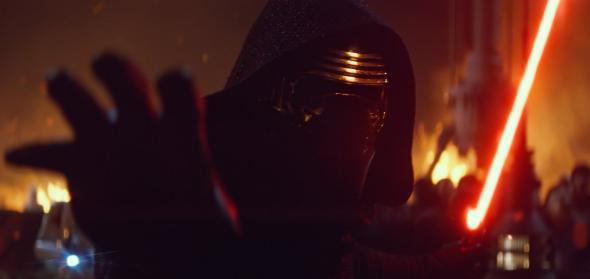How The Force Awakens Remixes the Star Wars Expanded Universe (original) (raw)

The Expanded Universe lives on in the characters of The Force Awakens.
© 2015 Lucasfilm
We know that Star Wars is pastiche—a series built from bits and pieces of cinema history, from classic Westerns and space opera to Japanese cinema and outright propaganda. And Star Wars: The Force Awakens sits in this tradition, a pastiche of a pastiche, with parts pulled from the previous films, from the first Death Star trench run to the Millennium Falcon’s chase through an asteroid field to Luke’s vision in the caves of Dagobah. Even new characters, like Rey and Finn, are a satisfying mix of attributes from their predecessors in the original films.
At times, this is so blatant that even casual viewers will recognize the origins of, say, the friendship between Daisy Ridley’s desert-dwelling Rey and the cute, blooping droid BB-8. What’s harder to see—and more exciting for dedicated fans—is the degree to which The Force Awakens is also a kind of mashup of elements from the entire Star Wars canon. In particular, J.J. Abrams and his team took elements and plot points from the now-defunct Expanded Universe, and forged them into something entirely new and exciting.
For those who weren’t obsessed with Star Wars: The Expanded Universe was the vast collection of books, comics, video games, animated series, and tabletop adventures that extended the Star Wars franchise beyond its films and immediate film tie-ins. And for passionate fans, the Expanded Universe was where we learned the details of how Anakin Skywalker became Darth Vader; how Han Solo met Chewbacca; how the Jedi filled the galaxy and how the Sith built their empire. And in the absence of sequels, the Expanded Universe is where a generation of writers took their turn at moving Star Wars forward, from the tales of Rogue Squadron to the future of the Skywalker family.
When Disney purchased LucasFilm and announced a third Star Wars trilogy, it also pulled the plug on the EU. But while closed, the Expanded Universe isn’t gone. Not just its influence, but key plot points and characters live on in The Force Awakens.
(At this point, spoilers are unavoidable. Read at your own peril.)
Let’s start from the top. The “First Order” of the _The Force Awakens_—the bad guys, basically a reskinned Galactic Empire—is a remix of the “Imperial Remnant,” one of the adversaries and factions of the EU. And for its leader, Supreme Leader Snoke, a mysterious alien voiced by Andy Serkis, the movie appears to borrow from the Grand Admiral Thrawn character in Timothy Zahn’s Heir to the Empire series. The First Order’s superweapon—a sun-draining, planet-sized cannon that can destroy an entire solar system—is essentially the “Sun Crusher” as portrayed in the novel Dark Apprentice by Kevin Anderson. (Worth noting: Its name, the “Starkiller,” is a direct reference to the main character in one of George Lucas’ original drafts of Star Wars, Annikin Starkiller.)
The Expanded Universe lives on in the characters of The Force Awakens. Kylo Ren (Adam Driver), our chief antagonist, is the son of Han Solo and Leia Organa. His actual name is Ben, and he was a Jedi apprentice under Luke Skywalker who turned to the Dark Side. His story parallels that of the EU’s Jacen Solo, Han and Leia’s son who becomes the heir to Darth Vader’s legacy. He also holds a resemblance to Kyp Durron, a young Jedi who betrays Luke and nearly destroys the new Jedi Order. Jacen Solo had a twin sister, Jaina, who ultimately stood as his foil. In The Force Awakens, that role is played by Rey, whose parentage, for now, remains a mystery.
It’s very easy—and fun, for a dedicated fan—to continue in this vein. The Force Awakens is filled with direct references and allusions to storylines, locations, and characters from the Expanded Universe, remixed into something new yet excitingly familiar. With two sequels forthcoming—as well as an array of new material—we should expect more mining of the past 30 years of Star Wars material. Fans who bemoaned the erasure of the Expanded Universe should take heart: It may be dead, but it hasn’t stopped moving yet.